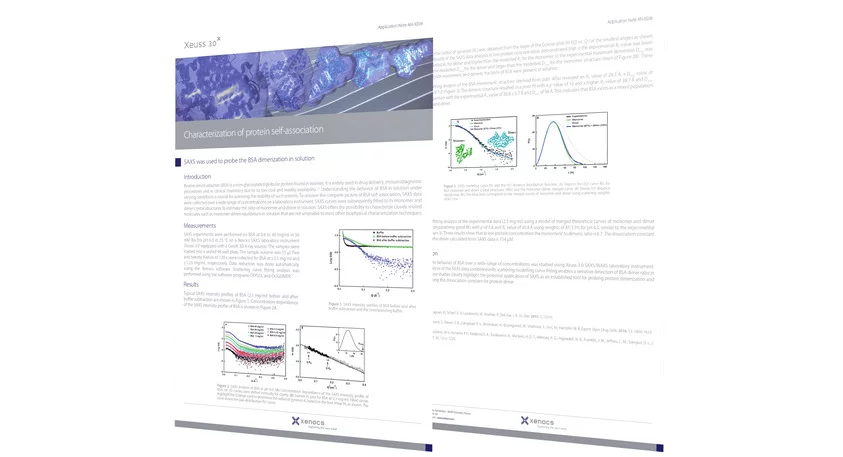SAXS is used to probe the BSA dimerization in solution
Bovine serum albumin (BSA) is a non-glycosylated globular protein found in bovines. It is widely used in drug delivery, immunodiagnostic procedures and in clinical chemistry due to its low cost and readily availability.1,2 Understanding the behavior of BSA in solution under varying conditions is crucial for assessing the stability of such systems.
To uncover the complete picture of BSA self-association, Small Angle X-ray Scattering (SAXS) data were collected over a wide range of concentrations on a laboratory instrument. SAXS curves were subsequently fitted to its monomer and dimer crystal structures to estimate the ratio of monomer and dimer in solution. SAXS offers the possibility to characterize closely related molecules such as monomer-dimer equilibrium in solution that are not amenable to most other biophysical characterization techniques.
In this application note you will discover a detailed analysis of the SAXS data combined with scattering modelling curve fitting providing valuable insights into the solution state behavior of BSA.


































